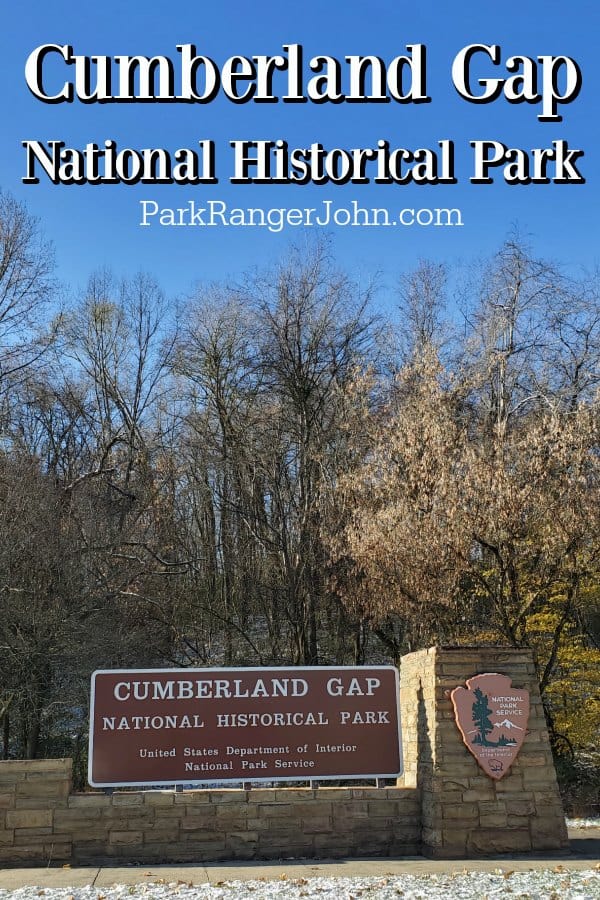When it comes to National Parks in Virginia you can expect to see a ton of historical sites, monuments and more! There are currently 22 Virginia National Parks managed by the National Park Service including a ton of Civil War sites.
Virginia was the site of many important civil war battles. Virginia is also the home of Jamestown the first permanent English settlement in North America. Plus George Washington, Thomas Jefferson, and James Madison were born in Virginia.
The state is also home to some of the most visited National Parks in the country including the Blue Ridge Parkway.
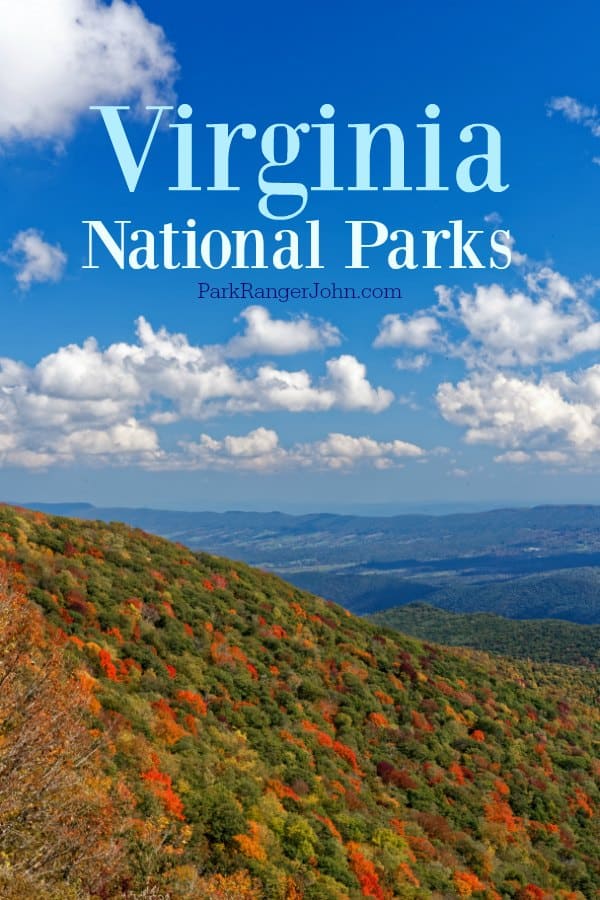
National Parks in Virginia
Appalachian National Scenic Trail
Top Things to do - Thru-hiking, Camping, Scenic Overlook, Wildlife Viewing
Lodging - Lodging options along the Virginia segment of the Appalachian National Scenic Trail (AT) can be found in towns such as Damascus, Abingdon, Atkins, Marion, Troutville, Buena Vista, Glasgow, Lexington, and Front Royal.
Camping - The AT provides a series of backcountry shelters specifically for thru-hikers and other backpackers. Shelters are spaced at regular intervals along the trail and are available on a first-come, first-served basis.
554 miles of the Appalachian Trail passes through Virginia. The elevation of the trail ranges from 265 feet up to 5500 feet.
The Appalachian Trail passes through Shenandoah National Park for 104 miles.
There are a couple of trail guides available including the Appalachian Trail Guide to Central Virginia and the AT trail guide to Southwest Virginia. There is also an AT Trail Guide to Maryland and Northern Virginia.
These trail guide provide a ton of great information on planning day trips or longer hiking trips.
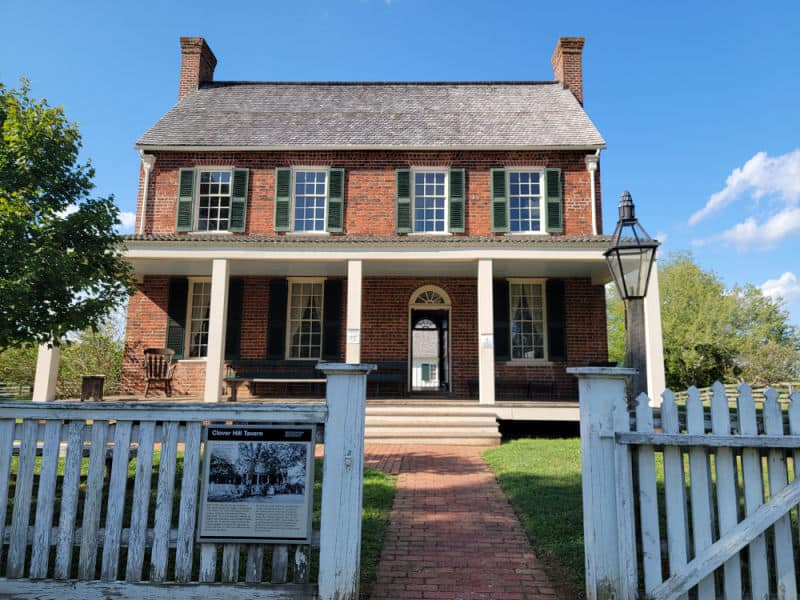
Appomattox Court House National Historical Park
Top Things to do - Guided Programs, Junior Ranger Programs, Birdwatching, Picnicking, Appomattox Court House Driving Tour. Hiking Sweeney Prizery-oldest building in the village, North Carolina Monument, Appomattox River and Lees headquarters
Lodging - There are no National Lodges within the park.
Camping - There are no campgrounds within the park.
Park Address - The following is the address for the visitor center: Appomattox National Historic Park, 111 National Park Drive, Appomattox, VA 24522
Appomattox Court House NHP is located in South-Central Virginia approximately 25 miles east of Lynchburg. The park is open year-round offering tours of historic buildings and living history programs.
This was the site of the final events of the Civil War on April 9, 1865. Confederate General Robert E. Lee realized that his troops were surrounded and exhausted. He met with Union Lieutenant General Ulysses S. Grant to discuss terms of surrender.
Their meeting was held in the parlor of a private home in the town of Appomattox Court House, Virginia. This meeting essentially ended the American Civil War.
Today visitors can visit a reconstruction of the house where this meeting was held, the 1819 Clover Hil Tavern and other buildings. There is also a four-mile History Trail that goes by places associated with the surrender.
Arlington House, The Robert E. Lee Memorial
Top Things to do - Self-Guided Tour of House, Ranger Guided Programs, visit Custis-Lee Home, and the Robert E. Lee Museum.
Lodging - There are no lodging options within the memorial.
Camping - There are no campgrounds within the Arlington House
Park Address - Arlington House, The Robert E. Lee Memorial, Arlington National Cemetery, Arlington 22211
Arlington House is located in Northern Virginia in Arlington, Virginia. The site offers the opportunity to tour Custis-Lee Home and the Robert E. Lee Museum.
George Washington Parke Custis built a Greek Revival Mansion between 1802 - 1818. He was George Washington's adopted grandson.
The mansion became the home of U.S. Army Officers Robert E. Lee when he married Mary who was Custis's daughter. The mansion was located across the Potomac River from Washington D.C.
Robert E. Lee and Mary lived in the house until the Civil War. On April 20, 1861, Robert E. Lee wrote a letter resigning from the U.S. Army and left two days later to join the Confederate cause. Robert E. Lee never returned to this house.
As the cemeteries in the area started to fill in 1864 the Union Army appropriated Arlington House to become the site of a cemetery. Partially to assure that Robert E. Lee would never live in the house again.
Ths new cemetery developed into what is today Arlington National Cemetery.
Arlington House as designated a memorial to Robert E. Lee in 1925 by Congress. Today you can take tours of the restored house and see original furnishings and paintings including Robert E. Lee's writing desk.
Assateague Island National Seashore
Top Things to do - Camping, Biking, Wildlife Photography, Wildlife Viewing, Hiking, Ranger Led Programs, Horseback Riding, Crabbing, Fishing, Swimming and Surfing, Canoeing and Kayaking,
Lodging - There are no lodging options within the national seashore.
Camping - Assateague has two oceanside and four bayside camping areas in Maryland for visitors who wish to backpack or paddle the island.
Park Address - 7206 National Seashore Lane, Berlin, MD 21811
Assateague Island National Seashore is located in Eastern Virginia and Southeastern Maryland approximately 15 miles south of Ocean City. The park offers the opportunity to see the famous Assateague ponies.
Assateague Island encompasses a 37-mile long barrier island. To reach the park you will pass through Assateague State Park which also offers camping and swimming. You can also visit Chincoteague National Wildlife Refuge for epic bird watching.
The Assateague wild horses are not native to the area. The horses are descendants of stock horses brought to the island in the 1600s. Over the past 400 years, the horses have adapted to the area. The horses are wild so you want to be careful near them.
Blue Ridge Parkway
Top Things to do - Auto Touring, Bicycling, Fishing, Hiking, Picnicking, Winter Recreation
Lodging - Two lodges on the parkway provide overnight accommodations from spring through the fall.
Camping - The parkway's eight campgrounds are open from May through late October, weather permitting. They are closed in winter
Park Address - Milepost 384, Asheville, NC 28803
The Blue Ridge Parkway is 469 miles long between Virginia and North Carolina. Considered America's Favorite Drive the Blue Ridge Parkway has a maximum speed limit of 45 mph or less allowing visitors to truly slow down and enjoy the drive.
There are 360 miles of trails on the Parkway perfect for getting out and exploring more. The Blue Ridge Parkway starts at the Great Smoky Mountains all the way to Shenandoah National Park where it becomes Skyline Drive.
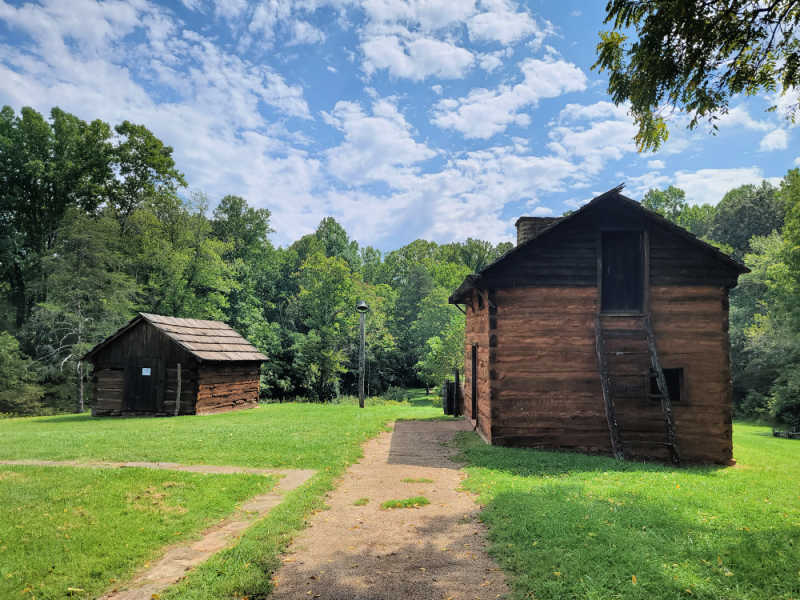
Booker T. Washington National Monument
Top Things to do - Visit the Visitor Center, Explore the Plantation Trail, Jack-O-Lantern Branch Heritage Trail, Picnic Area, Farm Area, Garden Area
Lodging - There are no lodging facilities available at the Park.
Camping - There is no camping within Booker T. Washington NM
Park Address - 12130 Booker T. Washington Highway, Hardy 24101
Booker T. Washington NM is located in Southern Virginia approximately 25 miles southeast of Roanoke. The park is open year-round and offers a visitor center, Plantation Trail and Heritage Trail.
Booker T. Washington was born in 1856 the son of an enslaved mother. He overcame his slave origins to become one of the most influential African Americans of his era.
Mr. Washington was a firm believer in the power of education and at the age of 25 was named the first president of the Tuskegee Institute. He recruited famed scientist George Washington Carver along with many other amazing teachers.
The Booker T. Washington National Monument is located on the site of the Virginia Tobacco plantation where he was born. You can learn more about his life, career, and legacy at the visitor center.
The Plantation Trail is a quarter-mile long and passes through the reconstruction of buildings that would have been on the farm in the 1850s. The Jack-O-Lantern Branch Heritage Trail is 1.5 miles long and looks at how natural resources were used on the plantation.
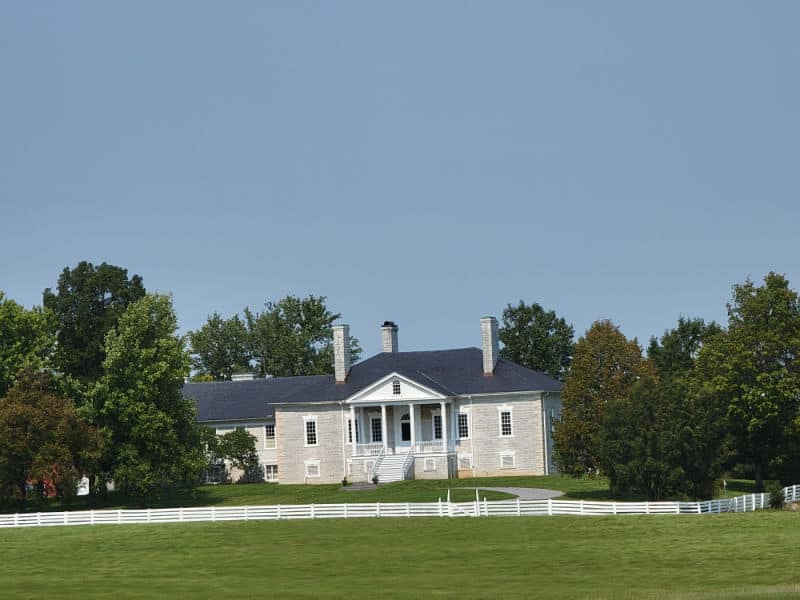
Cedar Creek and Belle Grove National Historical Park
Top Things to do - First Stop at the Visitor Center, Visit the Battlefield Museum, Tour the 1797 Manor House, See Local History Exhibits & Civil War Artifacts, Tour Cedar Creek Battlefield, Join a Star Party, Walk the Morning Attack Trails, Go to a Ranger-led Program, Follow Trenches on the 19th Corps Trails, Be a Junior Ranger
Lodging - There are no lodging facilities within the park
Camping - There are no campgrounds within the park
Park Address - 7712 Main Street, Middletown, VA 22645
Cedar Creek & Belle Grove NHP are located in Northern Virginia approximately 75 miles west of Washington D.C. The park offers tours of a Civil War Battlefield and 18th-century plantation.
Cedar Creek Battlefield preserves the site of an 1864 Civil War Battle. There is a 17.5-mile driving tour that you can visit. The tour has a podcast, cell phone audio tour or a battlefield app you can download for more information.
Colonial National Historical Park
Top Things to do - Auto Touring, Birdwatching, Wildlife Viewing, Hiking, Wildflowers Viewing, Biking
Lodging - Colonial National Historical Park, located in Virginia, does not offer lodging options within the park itself. However, there are various accommodation options in the surrounding area, primarily in Colonial Williamsburg and nearby historic Yorktown
Camping - There is no camping available within the park.
Park Address - 1000 Colonial Parkway, Yorktown , VA 23690
Colonial NHP is located in Southeastern Virginia approximately 50 miles southeast of Richmond. The park offers tours of historic sites, hiking, biking, and outdoor exploring.
Colonial Nat. Historical Park encompasses three sites that played important roles in early American History from 1607 to 1781.
Cape Henry Memorial - Commemorates the first landing of the Jamestown settlers in Virginia.
Historic Jamestowne - The site of the first successful permanent British settlement in North America.
Yorktown Battlefield - The battlefield where George Washington defeated the British to end the Revolutionary War.
Historic Jamestown and Yorktown Battlefield are connected with the 23-mile Colonial Parkway which also provides access to Colonial Williamsburg. The three sites combine to form the Historic Triangle.
Cumberland Gap National Historical Park
Top Things to do -Visit the Visitor Center and Museum, Watch Park Films, Hiking and Backpacking, Sightseeing and wildlife watching, Photography, Birdwatching, Be a Junior Ranger, Hensley Settlement Tours, Gap Cave Tours
Lodging - Cumberland Gap National Historical Park does not have lodging options within the park itself. Visitors to the park typically stay in nearby towns such as Middlesboro, Kentucky, Harrogate, Tennessee, Pineville, Kentucky, Tazewell, Tennessee, or other surrounding areas where hotels and motels are available.
Camping - The main campground, Wilderness Road Campground, is located near the visitor center in Virginia and provides both tent and RV camping with amenities such as restrooms and showers.
Park Address - 91 Bartlett Park Road, Middlesboro 40965
Cumberland Gap NHP is located in Western Virginia along with Tennessee and Kentucky. Cumberland Gap was the first gateway to the west.
The park has over 80 miles of trails, an overlook drive, and multiple visitor centers to explore.
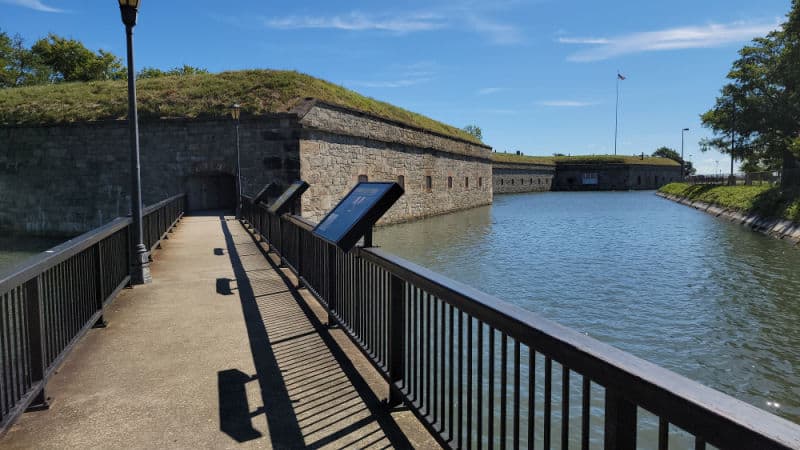
Fort Monroe National Monument
Top Things to do - Visit the Visitor Center, Fort Monroe Casemate Museum, Old Comfort Point Lighthouse, Building 17, Chapel of Centurion, Walk the Parade Grounds, Pet Cemetery
Lodging - There are no lodging options within the park
Camping - There are no camping options within Fort Monroe NM
Park Address - 41 Bernard Road, Building #17, Fort Monroe, VA 23651-1001
Fort Monroe NM is located in Southeastern Virginia approximately 65 miles southeast of Richmond. The park offers tours of the museum and fort, bird-watching and more.
Fort Monroe is located on the Chesapeake Bay providing a defensive location for America's coastline. Completed in 1834 this is the country's largest stone fort.
The fort was decommissioned in 2011 and declared a National Monument. It is interesting to note that Robert E. Lee oversaw the construction of the fort as a U.S. Army lieutenant before becoming a commander in the Confederate army.
Today you can explore the grounds including the 1819 Old Quarters, the oldest house inside the moat. Other sites include Building 17 where Robert E. Lee and his family lived, the 1858 Chapel of the Centurion, The Casemate Museum and the 1803 Old Point Comfort Lighthouse.
Fredericksburg and Spotsylvania National Military Park
Top Things to do - Explore the four battlefields, Chatham Manor, Jackson Death Site, Ellwood Manor, Salem Church, Watch Park Films, Join Junior Ranger Programs, Guided Tours, Hiking, Biking, Picnicking
Lodging - There are no lodging options within Fredericksburg and Spotsylvania National Military Park
Camping - There are no campgrounds within the park
Park Address - Fredericksburg Battlefield Visitor Center: 1013 Lafayette Boulevard, Fredericksburg, VA 22401
Fredericksburg and Spotsylvania NMP is located in Northern Virginia approximately 55 miles north of Richmond. The park is open year-round offering walking and driving tours of the battlefields, visitor centers, and historic buildings.
The battlefield sites within this National Military Park are spread out over a large area. We would suggest stopping at one of the park visitor centers to pick up current park maps and schedules.
The visitor centers also have park films detailing the Civil War battles that occurred here.
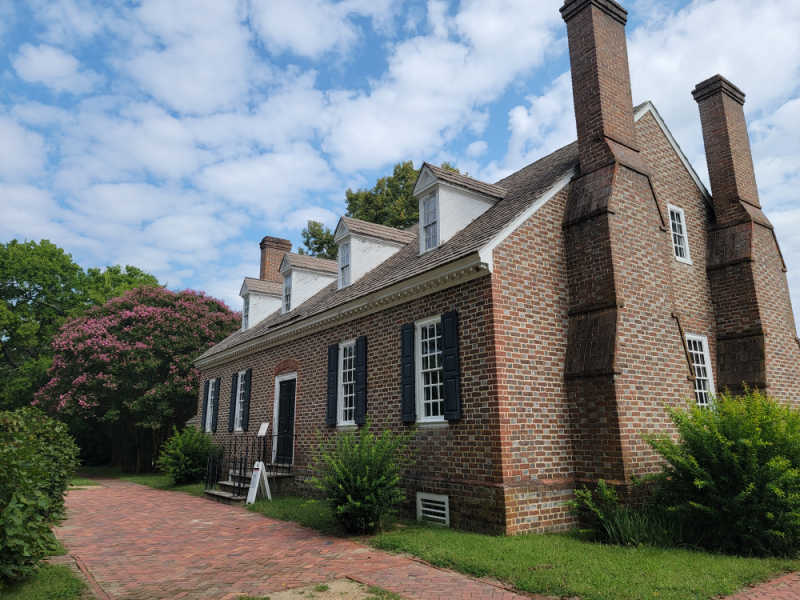
George Washington Birthplace National Monument
Top Things to do - Hiking, Bicycling, Picnicking, Ranger Programs, Fishing, Self Guided Tours, Enjoy Potomac River Beach, Visit the Memorial Area
Lodging - The George Washington Birthplace National Monument in Westmoreland County, Virginia, does not offer on-site lodging. Visitors to the area have several lodging options to choose from, including hotels and motels in nearby towns like Colonial Beach and Montross.
Camping - There are no designated National Park Campgrounds within the park.
Park Address - 1732 Popes Creek Road, Colonial Beach 22443
George Washington Birthplace NM is located in Eastern Virginia approximately 70 miles south of Alexandria. The park offers the opportunity a recreation of the home that George Washington was born in.
The original home that George Washington was born in burned to the ground in 1779. George Washington lived in the house for the first three years of his life. The reconstructed house was built with locally made bricks on the 200th anniversary of George Washington's birth.
The reconstructed house was built based on what would have been typical for a well to do Virginia family of the early 18th century. The remains of the actual birth house were discovered in 1931 and the outline of the foundation can be seen today.
George Washington Memorial Parkway
Top Things to do -Ranger-led Programs, Concerts, Bicycling, Canoeing or Kayaking, Hiking, Picnicking, Playing Field or Court Games, Walking or Running, Wildlife Viewing, Birdwatching,
Lodging - The George Washington Memorial Parkway does not have lodging options within the parkway itself. However, there are various lodging options available in the surrounding areas near the parkway. Visitors can find hotels, motels, and other accommodations in nearby locations such as McLean, Virginia, and Alexandria, Virginia
Camping - There are no campgrounds within the park
Park Address - George Washington Memorial Parkway Headquarters, 700 George Washington Memorial Parkway, McLean, VA 22101
George Washington Memorial Parkway is located along the south side of the Potomac River in Washington D.C.
The parkway encompasses twenty historic, recreation and natural areas within Washington D.C. Sites include The Arlington House: Robert E. Lee Memorial, Clara Barton NHS, Lyndon Baines Johnson Memorial, and Theodore Roosevelt Island.
Additional sites include the Claude Moore Colonial Farm, Great Falls Park, Dyke Marsh Wildlife Preserve and more! There is even three marinas for sailboats and boats.
Harpers Ferry National Historical Park
Top Things to do - Visit the visitor Center, Explore historic Lower Town Museums and Exhibits Picnicking, and Hiking.
Lodging - Harpers Ferry National Historical Park, located at the confluence of the Potomac and Shenandoah rivers, does not provide on-site lodging.
Camping - There are no campgrounds within the park.
Park Address - Harpers Ferry National Historical Park, 171 Shoreline Drive, Harpers Ferry, WV 25425
Harpers Ferry NHP is located in Northern Virginia, Central Maryland along with Eastern West Virginia. The park provides the opportunity to explore a large number of historic sites.
Harpers Ferry is located at the confluence of the Potomac and Shenandoah Rivers. George Washington pushed for the establishment of a federal armory and arsenal that used water power to run the machinery that manufactured weapons.
During the Civil War in 1961, the Confederate and Union armies fought over these weapons and equipment. In 1862, Confederate Major General Thomas “Stonewall” Jackson captured 12,700 Union Troops here.
Visitors can explore the Lower Town that includes the dry goods store, tavern, confectionery, clothing store, and the fire engine house. In the Maryland Heights section, you can view the old Chesapeake and Ohio Canal.
Maggie L. Walker National Historic Site
Top Things to do - Take a Guided Maggie L. Walker's home Tour, Become a Junior Ranger, and Tour the Jackson Ward Historic District
Lodging - There are no National Park lodges within the park
Camping - There are no campgrounds available within Maggie L. Walker National Historic Site
Park Address - 600 N. 2nd Street, Richmond 23219
Maggie L. Walker NHS is located in Richmond in Central Virginia. The park offers tours of the home of Maggie L. Walker.
Maggie Walker was the first African-American woman to charter and serve as president of a bank in the United States. In 1903 she founded the St. Luke Penny Savings Bank. A place where people could "take the nickels and turn them into dollars".
She was born in 1864 to a mother who had been enslaved. She rose as the leader of African-American fraternal and social organizations including being the head of the Order of St. Luke. In 1904 the Walker family purchased a home 1883 home in the Jackson Ward neighborhood of Richmond. The neighborhood was the center for African-American business and social life along with a national historic landmark district.
Maggie Walker lived in this home until she passed away in 1934. Before passing away she served on the board of directors of the National Association for the Advancement of Colored People (NAACP).
Today you can view a park film about her life along with taking a guided tour of the home. The house is 28-rooms that still contains many original family items. The house has been restored to its appearance from the 1930s.
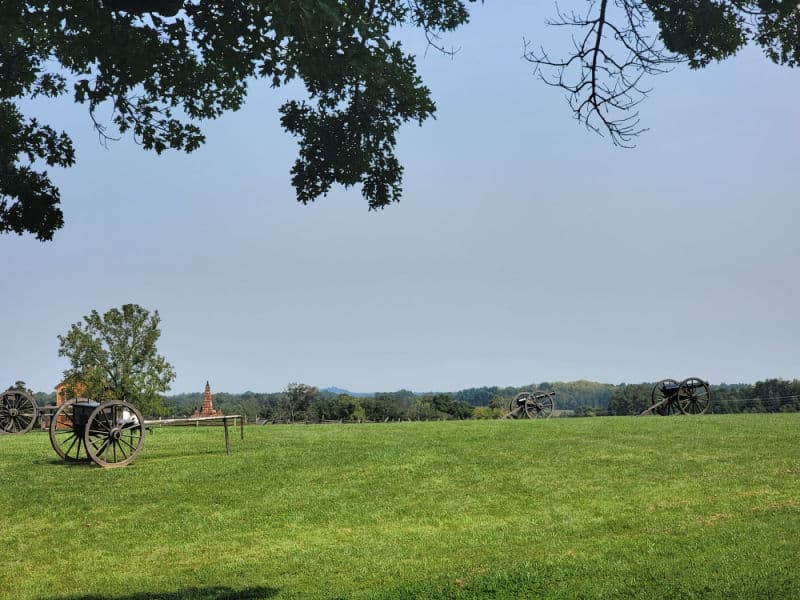
Manassas National Battlefield Park
Top Things to do - Explore the Henry Hill Visitor Center Museum, Walk the 1.1 mile Henry Hill Loop Trail, Watch the park's film Manassas: End of Innocence, Take the self-guided driving tour, Visit the Brawner Farm Interpretive Center, Visit the historic Stone House, Hike the First or Second Manassas Loop Trail
Lodging - There are no National Park Lodges within the park.
Camping - There are no campgrounds within the park.
Park Address - 6511 Sudley Road, Manassas, VA 20109
Manassas NBP is located in Northern Virginia approximately 25 miles west of Arlington.
The battle at Manassas is also called Bull Run. The first major battle of the Civil War occurred on July 21, 1861. Prior to this battle, both sides thought the war would maybe take weeks. During this first battle resident of Washington D.C. actually drove out to watch the battle for entertainment.
The Northerners thought this would be a battle they would easily win. Instead, the arrival of Confederate reinforcements caused the Union soldiers to flee in panic. The soldiers ran into carriages and spectators as they tried to flee the battlefield.
Later in August 1862, another battle would occur here that was again a Confederate victory. Today the battlefield park preserves the land in which these battles occurred.
The park visitor center has a park film, 1-mile self-guided trail, and driving tours.
Overmountain Victory National Historic Trail
Top Things to do - Hiking, Visit Historic Sites, Wildlife Viewing, Educational Programs, Junior Ranger Programs
Lodging - The Overmountain Victory National Historic Trail in Virginia does not have specific lodging options along the trail itself. However, nearby towns such as Abingdon, Damascus, and Bristol offer various accommodations including hotels, bed and breakfasts, inns, cabins, and campgrounds.
Camping - The Overmountain Victory National Historic Trail offers camping options at various locations along its route through Virginia, Tennessee, North Carolina, and South Carolina.
Park Address - 4001 Chesnee Hwy, Gaffney 29341
Overmountain Victory NHT runs through Virginia, Tennessee, North Carolina, and South Carolina. The 330 miles of the trail are open year-round.
The trail allows you to retrace the path to victory in the Revolutionary War.
In 1780 the British had taken control of Charleston, South Carolina and were pushing northward to defeat rebellious colonists. A group of Patriots gathered near Arlington, Virginia in September 1780.
They began marching south to engage the Loyalist who was anti-independence colonists still loyal to England. The Patriot group grew as it traveled through the Appalachians and into South Carolina by early October.
The Patriots defeated a Loyalist force on October 7th at Kings Mountain. This victory set in motion the events that led to the British surrender at Yorktown in 1781.
Petersburg National Battlefield Park
Top Things to do - Take the 16-stop Driving Tour, Visit Eastern Front Visitor Center, Walk Around City Point, Visit Poplar Grove National Cemetery, Drive the Eastern Front Tour Road, Bicycling, Horseback Riding
Lodging - There are no lodging options within the park.
Camping - There are no campgrounds within the park.
Park Address - Eastern Front Unit Visitor Center, 5001 Siege Road, Petersburg, VA 23803
Petersburg NBP is located in South-central Virginia approximately 25 miles south of Richmond. The park is open year-round offering driving tours of siege and battlefield locations, guided tours and interpretive programs.
There is a 33-mile auto route that visits more than a dozen sites associated with the battle of Petersburg. This battle was vital to the end of the Civil War.
Union General Ulysses S. Grant aimed to capture the Confederate capital of Richmond, Virginia located 25 miles south of Petersburg. General Grant's direct attack on Petersburg failed so he repositioned troops and started the longest siege in American Warfare.
The constant attacks from General Grant's troops forced Confederate General Robert E. Lee to abandon Petersburg in April 1865. He was then forced to surrender to General Grant at Appomattox Court House in on April 9, 1865.
Potomac Heritage National Scenic Trail
Top Things to do - Hiking, Paddling, Bicycling, Junior Ranger Program, Wildlife Viewing, Picnicking, Fishing, Birdwatching
Lodging - You can consider staying in nearby towns and cities such as Alexandria, Arlington, or Woodbridge, which offer a range of hotels, motels, and bed and breakfasts.
Camping - Camping options along the Potomac Heritage National Scenic Trail in Virginia include Prince William Forest Park and Leesylvania State Park
The Potomac Heritage NST runs along the Potomac River in the District of Columbia, Maryland, Virginia, and Pennsylvania. The trail is open year-round offering hiking, boating, biking and camping surrounded by epic natural beauty.
The Potomac Heritage NST is a partnership between the National Park Service and multiple different government agencies and private organizations. There are more than 800 miles of trails. Part of the trail is the 184.5-mile long towpath in the Chesapeake and Ohio Canal National Historical Park.
Along with the 18.5 mile-long Mount Vernon Trail in George Washington Parkway and routes within Prince William Forest Park.
Prince William Forest Park
Top Things to do - Visit Prince William Forest Park Visitor Center, Hiking, Biking, Cabin Camping, Picnicking, Ranger-led Programs and Events, Wildlife Viewing, Birdwatching
Lodging - There are five historic cabin camps in Prince William Forest Park that were built in the 1930s by the Civilian Conservation Corps
Camping - There are 3 different front-country campgrounds as well as 1 backcountry campground. Oak Ridge Campground is a family camping area, Turkey Run Ridge Group Campground is a group camping area, Prince William Forest RV Campground is an RV camping area with hook-ups run by a private concessionaire, and Chopawamsic Backcountry Area is a backcountry hike-in campground.
Park Address - 18170 Park Entrance Road, Triangle, VA 22172
Prince William Forest Park is located in Northern Virginia approximately 32 miles south of Washington D.C. The park offers year-round outdoor recreation.
During the Great Depression of the 1930s building new federal recreation areas was a way to provide work for unemployed people while also restoring local land. This park preserves the largest inventory of Civilian Conservation Corps (CCC) structures in the National Park System.
The park includes 37-miles of hiking trails and 21-mile of bicycle accessible roads and trails. Make sure and stop by the visitor center for information on current conditions, park maps and to view the park movie.
Richmond National Battlefield Park
Top Things to do - Visit the Visitor Center and Museum, Hiking the trails, Biking, Birdwatching, Become a Junior Ranger
Lodging - There are no National Park lodges within the park.
Camping - There are no campgrounds within the park.
Park Address - 3215 E. Broad Street, Richmond, VA 23223
Richmond NBP is located in East-central Virginia near Richmond. The park is open year-round and offers the opportunity to view battlefields, historic sites and enjoy ranger-led programming.
One thing to know about Richmond NBP is it covers 13 units along an 80-mile driving tour. This is a park you want to plan time to visit.
During the Civil War, the Confederates named Richmond, Virginia their capital city. Located only 11o miles from the Union capital of Washington D.C.
The areas between Richmond and Washington D.C. saw many battles as the North and South fought to take over and protect Richmond.
Shenandoah National Park
Top Things to do - Visit the Visitor Centers and Exhibits, Driving Skyline Drive, Hiking, Backcountry Camping, Ranger Programs, Wildlife Viewing, Biking, Stargazing, Attend Special Events, Fishing, Be a Junior Ranger, Picnicking
Lodging - You will find multiple lodging options that cater to different tastes and needs, from comfortable and elegant to rustic and quaint. Such as Skyland, Big Meadows Lodge, Lewis Mountain Cabins and Public Use Cabin
Camping - Shenandoah National Park in Virginia offers several camping options for visitors.
Shenandoah National Park has five unique campgrounds that are open seasonally, from early spring until late fall. The campgrounds within Shenandoah National Park include Mathews Arm Campground, Big Meadows Campground, Lewis Mountain Campground, Loft Mountain Campground, and Dundo Group Campground
Park Address - 21073 Skyline Drive, Front Royal, Virginia 22630
Shenandoah NP is located in Northern Virginia approximately 75 miles west of Washington D.C. The park offers hiking, scenic drive in the Blue Ridge Mountains, camping, and more.
Skyline Drive is a must during a visit to this gorgeous National Park in Virginia. The 105-mile long Skyline Drive provides dozens of overlooks to view the Appalachian Blue Ridge landscape.
The park is incredibly popular during the Fall when the leaves change. Though the park is open year-round a lot of visitor services are closed during the winter.
101 miles of the Appalachian Trail passes through the park. There are a total of 513 miles of trails to explore.
Wolf Trap National Park for the Performing Arts
Top Things to do - Ranger Guided Tours, Children's Theater Activities, Junior Ranger Program, Hiking, Birdwatching, Picnicking
Lodging - There are no lodging options within the park
Camping - Camping or overnight park use is prohibited, except by written permission of the Superintendent.
Park Address - 1551 Trap Road, Vienna, VA 22182-1643
Wolf Trap National Park for the Performing Arts is located in Northeastern Virginia west of Washington D.C. The park is normally open from late May to early September.
The National Park Service operates the park in partnership with the Wolf Trap Foundation. The park offers more than 90 performances every year. The park was created after the late Catherine Filene Shouse donated 118 acres of her Virginia farmland to the federal government along with funds to create a performing arts center in 1966.
The first performances at the center were held in 1971. The major venue at the park is the Filene Center which has both indoor and outdoor seating for events.
Learn more about National Park Passes for parks that have an entrance fee.
$80.00 - For the America the Beautiful/National Park Pass. The pass covers entrance fees to all US National Park Sites and over 2,000 Federal Recreation Fee Sites for an entire year and covers everyone in the car for per-vehicle sites and up to 4 adults for per-person sites.
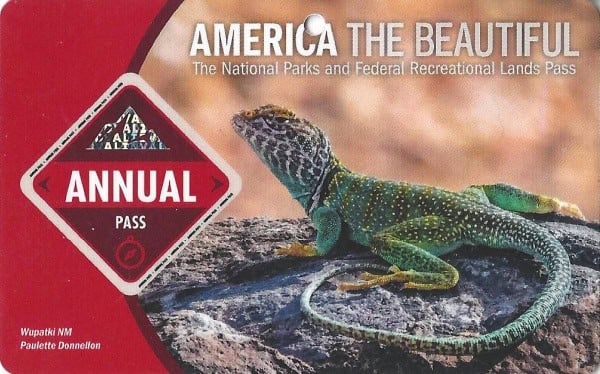
Buy your pass at this link, and REI will donate 10% of pass proceeds to the National Forest Foundation, National Park Foundation, and the U.S. Endowment for Forestry & Communities.
National Park Free Entrance Days -Mark your calendars with the five free entrance days the National Park Service offers annually.

For a fun adventure check out Escape Campervans. These campervans have built in beds, kitchen area with refrigerators, and more. You can have them fully set up with kitchen supplies, bedding, and other fun extras. They are painted with epic designs you can't miss!
Escape Campervans has offices in Vancouver, Seattle, Portland, San Francisco, Las Vegas, Los Angeles, Phoenix, Salt Lake City, Denver, New York, and Orlando
List of Virginia National Parks
- Appalachian National Scenic Trail
- Appomattox Court House National Historical Park
- Arlington House, The Robert E. Lee Memorial
- Assateague Island National Seashore (MD, VA)
- Blue Ridge Parkway (NC, VA)
- Booker T. Washington National Monument
- Cape Henry Memorial (Part of Colonial National Historical Park)
- Cedar Creek and Belle Grove National Historical Park
- Colonial National Historical Park
- Cumberland Gap National Historical Park (KY, TN, VA)
- Fort Monroe National Monument
- Fredericksburg and Spotsylvania National Military Park
- George Washington Birthplace National Monument
- George Washington Memorial Parkway (also Maryland, Washington DC)
- Harpers Ferry National Historical Park (WV, VA, MD)
- Maggie L. Walker National Historic Site
- Manassas National Battlefield Park
- Overmountain Victory National Historic Trail (NC, SC, TN, VA)
- Petersburg National Battlefield Park
- Potomac Heritage National Scenic Trail (DC, MD, VA, PA)
- Prince William Forest Park
- Richmond National Battlefield Park
- Shenandoah National Park
- Wolf Trap National Park for the Performing Arts
Affiliated Sites
- Captain John Smith Chesapeake National Historic Trail (VA, MD, DE, DC, PA, NY)
- Chesapeake Bay Watershed (DC, MD, NY, PA, VA, WV)
- Civil War Defenses of Washington (DC, MD, VA)
- Claude Moore Colonial Farm
- Great Falls Park
- Green Springs National Historic Landmark
- Star-Spangled Banner National Historic Trail (DC, MD, VA)
- Washington – Rochambeau National Historic Trail (MA, RI, CT, NY, NJ, PA, DE, MD, VA, DC)
There are 22 National Parks in Virginia that have over 25 million visitors every year. These parks produce over 1 Billion in economic benefits from tourism.
The National Parks in Virginia include 2 National Heritage Areas, 5 National Trails, and 3,072 National Register of Historic Places listings.
There are 121 National Historic Landmarks and 10 National Natural Landmarks in Virginia National Parks. There is 1 World Heritage Site in Virginia (Check out this list of all of the UNESCO World Heritage Sites in the United States), 2,080 places recorded by the Heritage Documentation Program and over 4.7 million objects in Virginia National Park museum collections. There are also 1,834 Archeological Sites.
For an entire list of US National Parks head over to our list of US National Parks in Alphabetical Order. We also have a printable checklist of National Parks in the United States available.
If you have dreamed of working in the National Parks make sure and check out our article on How to Become a Park Ranger. Working in the parks is one of the most amazing jobs you can find. There is just something special about waking up and knowing you are going to work in a beautiful park.
National Parks in neighboring states
National Parks in Washington DC
National Parks in North Carolina
National Parks in West Virginia
Make sure to follow Park Ranger John on Facebook, Instagram, Pinterest, and TikTok

